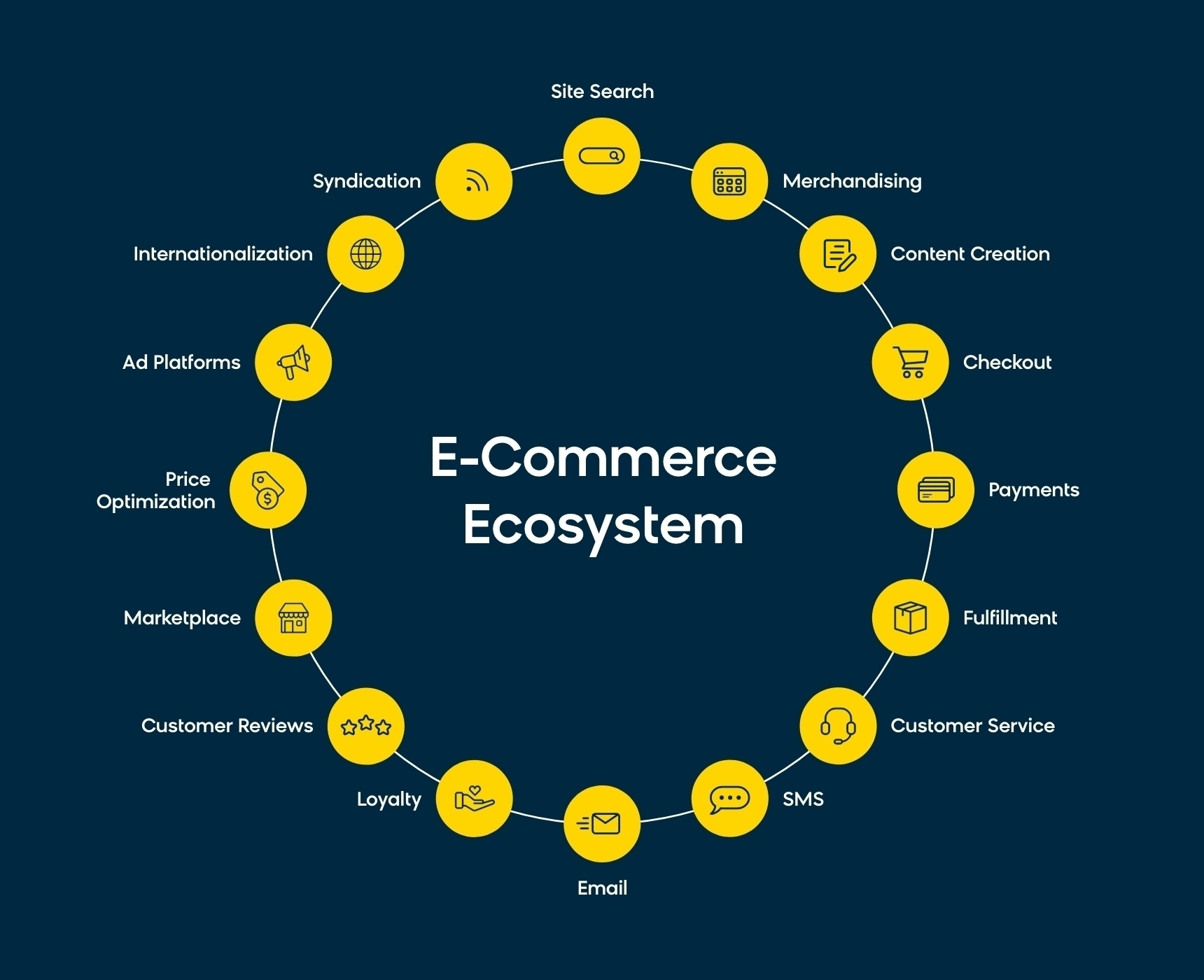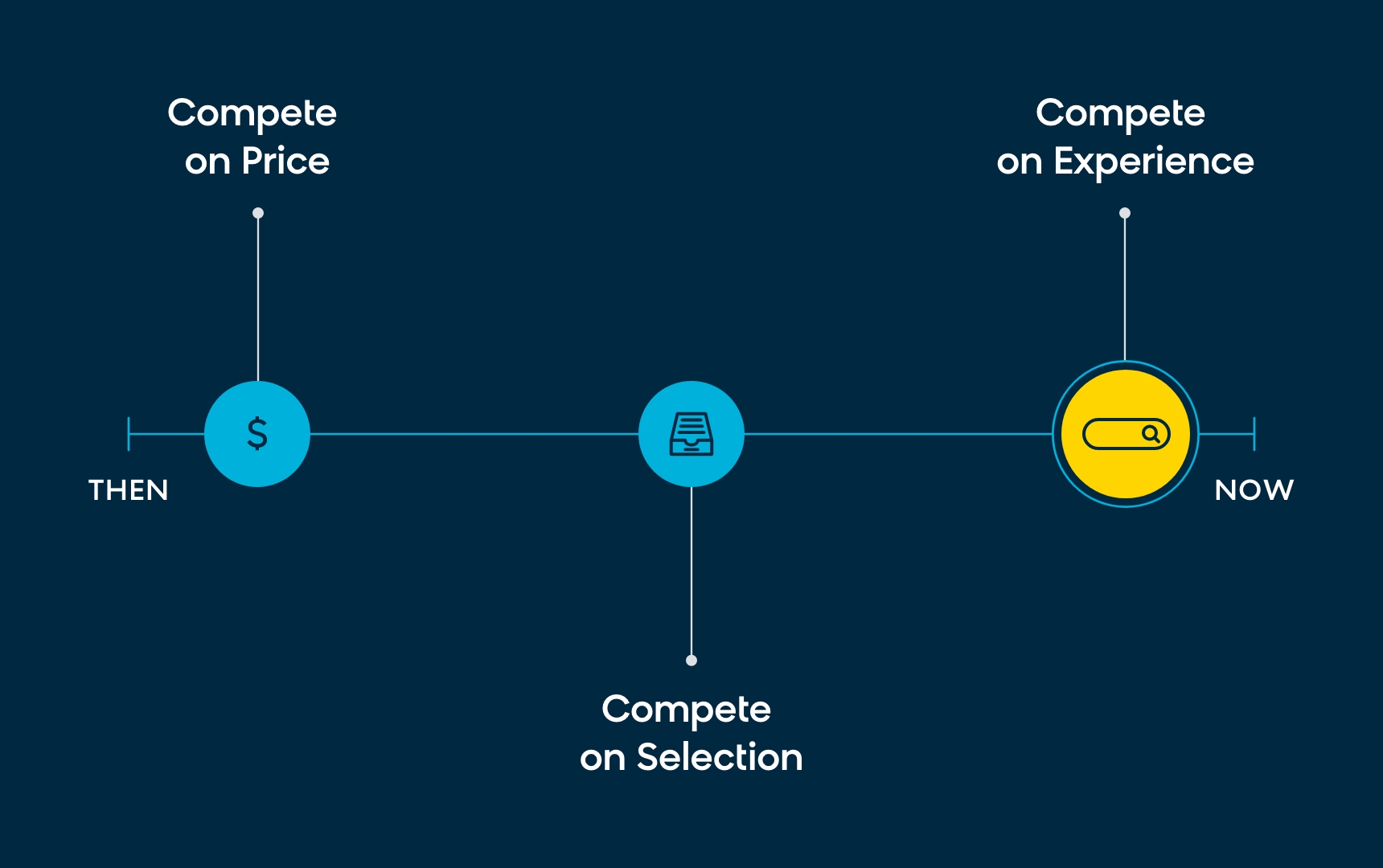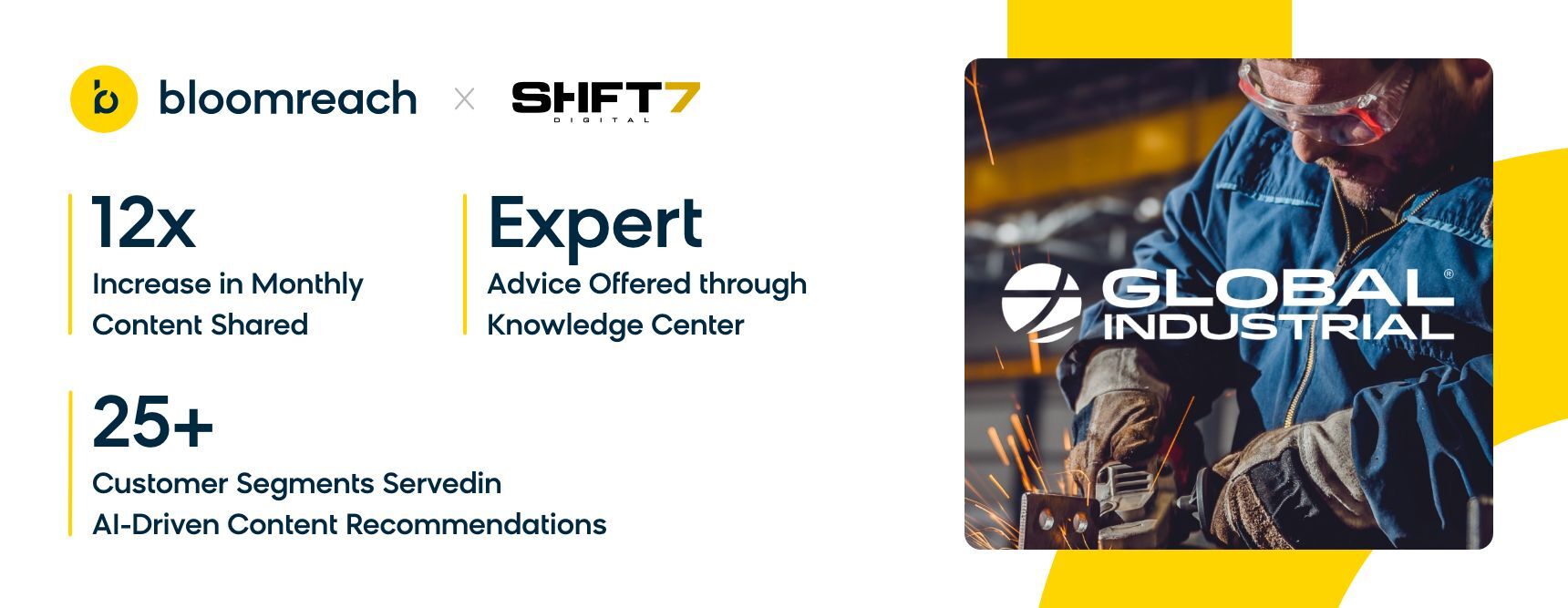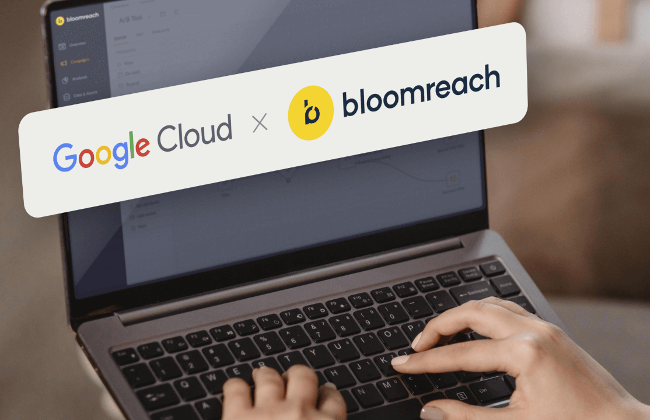Distributors Explore the New Frontier of B2B Ecommerce With the Help of Bloomreach and Shift7 Digital
By Kait Spong
02/06/2023
Over the past few years, the dynamic between business-to-business (B2B) manufacturers and distributors changed in major ways. Because COVID-19 has caused extreme disruptions in the supply chain, it’s become even more difficult for distributors to keep pace with shifting consumer demands. Now more than ever, B2B distributors need to create a new business model that upholds end-to-end digital experiences that go beyond the ability to complete online transactions.
Even before 2020, digital commerce showed tremendous traction with a historical growth rate of 15% year over year. This is why many commerce experts consider the pandemic to only be a catalyst in expediting the adoption and acceptance of ecommerce on a mainstream level. Digital processes will continue to find their way onto business roadmaps, but B2B needs to get on the same page as B2C. What does that mean, exactly? Well, it can be hard to know exactly where to start to get the most return on your investment with multiple decision-makers involved in any given digital transformation.

There is no going back to “normal,” either. The challenges of the pandemic, coupled with extreme shifts in customer expectations and demographics, mean that distributors (and manufacturers) will continue to face disruption to their traditional business models. Luckily, technology feeds on disruption, and distributors can use tech to their advantage, evolve their fulfillment workflows, and unify online and offline experiences.
It’s no secret that B2B sales processes revolve around sales reps acquiring new customers and nurturing existing customers. Since these particular users tend to be millennials or one of the many Zoomers now entering the workforce, it’s crucial to offer the right self-service tools that will create automated sales processes, while ensuring consistent, relevant experiences across all of your digital channels. It all starts with the ecommerce website, where distributors can better meet their business customers’ expectations.
B2B Can Transcend Legacy Ecommerce Platforms With Headless Architecture
For years, B2B distribution brands kept the in-person aspect of the business going strong with all of its luncheons, handshakes, and paper trails. Then, the pandemic showed up on our doorsteps one day, and in turn, customer expectations began to shift dramatically. At the same time, customer acquisition costs began to rise to extraordinary levels, which led to more questions than answers. These massive deviations from the traditional marketing and sales models beg the question: How can B2B distributors sell products more effectively online and relieve the new stressors they face?
“All steps of the sales cycle need to be examined,” explained Randy Higgins, Chief Strategy Officer of Shift7 Digital. “There is a lot of pressure on the supply chain and fulfillment piece for manufacturers. Many of them are having to figure out new ways to pick, pack, and ship at much smaller volumes. It has rippled through every functional area of numerous organizations.”
To relieve the excess pressure on manufacturers, distributors are prioritizing the “digital-first” mindset seen across B2C. Higgins added, “We are seeing a lot of investment in the ability to promote products digitally and also to facilitate the sales cycle from a commerce perspective.” However, it’s not as easy as applying B2C tactics to B2B, given the very different, and often complex nature, of B2B itself.

In fact, B2B products are often so complex and multifaceted that it presents a unique challenge to sales reps (or merchandisers, depending on your business structure) hoping to reach the right buyer at the right time with the correct product for their particular use case. If distributors aim to go beyond standing up an online store, they must focus on improving “findability.” Thus, a B2B ecommerce business needs to build solid pathways for customers to easily find a part, piece, or even an entire item in an online setting, regardless of its application.
Since equipment sold by B2B manufacturers is very specific, whether it’s being installed or repaired, business buyers don’t always know what they necessarily need to solve their particular problem. Even worse, the same product can often have different use cases.
So, it’s up to the distributor to create and maintain a digestible online shopping catalog with all of the correct information in one place, from the part number and product name to the descriptive details, and deliver a personalized customer experience to various segments of business users. If products aren’t properly organized and optimized, business buyers might become frustrated in their search and look elsewhere to make their purchases, like a competing distributor, manufacturer, or third-party marketplace.
To win in today’s market and move past the label of “very big, very old, and heavily fragmented,” distributors need to invest in a composable commerce strategy that allows them to pick the best-of-breed point solutions within a headless architecture, including site search, merchandising, and content creation, and doesn’t limit innovation like a legacy ecommerce platform.

While manufacturers are digitizing at a rapid rate of 70%, distributors are lagging behind and only conducting 40% of their business online, even though 56% of distributors claim that they are underway with digital transformation. The ones making the jump are already experiencing positive results: higher conversion rates, larger order values, increased brand loyalty, accelerated revenue growth, and more customer data to use in the future. With such promising outcomes in plain sight, distributors need to not only keep pace with these efforts around composable commerce but also must strategize on competing against Amazon Business.
Amazon Business Is Booming, but It’s Also Undisputed
In 2020, Amazon Business reached $25 billion in worldwide annual sales. To give this number a bit of context, the offshoot of the popular Amazon Web Services (AWS) hit $10 billion in 2018. Growing more quickly than AWS at 44% year over year, Amazon Business was leveraged during the first year of the pandemic by more than five million companies to stay afloat during unprecedented times.
While Amazon Business has the potential to be a great distribution channel to sell manufacturers’ products, the pandemic, environmental factors, and talent shortages are all signs that distributors should establish a digital shopping experience of their own and not rely on a third-party channel so heavily. Digitizing opens up a new sales channel, and also positions distributors to compete with Amazon Business.
Despite their newfound efforts, distribution companies will likely never contend with Amazon’s fulfillment centers. And that’s okay. Amazon has the money, resources, and capacity to fulfill, ship, and deliver orders in an unprecedented and untouchable way — at least for now. Rather than ruminating on operational excellence, it’s best to think strategically about personalized customer experiences as a whole. (spoiler alert: It’s not just an online sales portal).
Even though most distributors know their buyers well, situational awareness is often stored in the minds of salespeople or the account notes of customer relationship management (CRM) software. But to provide a top-notch digital experience, every step taken by the buyer will be aggregated and analyzed to give a full snapshot of each purchasing journey. Once enough data is collected, it is segmented, organized, circulated, and used to convert and retain.

At the end of the day, Amazon competes on price and selection, not experience. In other words, Amazon is not designed with product discovery in mind. While its marketplace’s selection is vast, it is still assembled with a variety of different sellers and vendors. The online marketplace giant goes through many fragmented steps to accumulate all the patchwork detail about a product onto a single detail page that targets its intended viewer.
It’s not a subconscious misstep on Amazon’s part, either. Amazon simply owns the transactional piece of their ecommerce strategy, making their website a great one to visit when the customer knows exactly which screw they’re looking to purchase, for example. But when the customer isn’t sure which screw is best for the job? That’s when things end in disappointment. This issue, not even unique to Amazon, is unlikely to improve any time soon if your business doesn’t have the right experience solutions in place.
While your buyers will undoubtedly have raised expectations for delivery speeds, distributors should see Amazon’s “Achilles’ heel'' as an opportunity to capitalize. “I believe the end buyer is now much more trained because of Amazon,” said Higgins. “And it’s no longer upsetting to get 10 different boxes from 10 different retailers on our porch on any given day.” These expectations set distribution businesses up to counter Amazon’s tactics with their own approach to efficiency and expediency.
Start with the very beginning of the sales pipeline: product discovery. When distributors give their customers automated tools to find exactly which part or piece they need, the sales process can be expedited without two-day shipping. Pair this strategy with the right informational components via relevant content, and it’s easy to see that shipping policies aren’t always the main deciding factor of a purchase. Experience matters, and it’s time to focus on the entire buyer’s journey — not just a fraction of it.

Bloomreach and Shift7 Highlight the Potential in Creating Digital Experiences
Shift7 Digital, a trusted partner of Bloomreach, is encouraging distributors to revolutionize the ecommerce experience for its customers. Backed by a team of experts with deep industry knowledge, Shift7 truly understands both the challenges and opportunities in the B2B market today, and pushes clients and prospects to evolve from a product-centric approach to a buyer-centric one.
Bloomreach helps Shift7 in its mission to build a best-in-class ecommerce experience. Paired with Shift7’s thoughtful website design, Bloomreach Discovery and Content unite the disjointed steps of the buyer journey by implementing a unified solution with full-site personalization capabilities.
For a good example of this unified solution in action, take a look at Global Industrial, a leading national distributor of industrial products and MRO supplies. This B2B client, recently exemplified in a Shift7 case study, combined Bloomreach’s Discovery and Content platforms with Shift7’s ecommerce website design to take its strategy to the next level.

Aside from optimizing its website for product search, Global Industrial’s main intent with the project was to invest in a headless CMS system with self-service portals. With it, they created The Knowledge Center, a content-rich resource designed to empower customers with expert advice on the topics they need to scale and succeed.
"The launch of The Knowledge Center highlights the product knowledge, expertise, and solutions we deliver every day to our customers," revealed Barry Litwin, CEO of Global Industrial. "This new customer resource will help us further our ‘Accelerating the Customer Experience’ strategy, and is part of our efforts to redefine the B2B ecommerce experience and strengthen our position as an indispensable business partner."
The Knowledge Center now delivers a cohesive user experience by connecting educational content to related product categories on Global Industrial’s website. The result serves over 25 consumer segments with rich, engaging, and AI-driven content, offering value to buyers and building brand loyalty. Read more about Global Industrial’s win with Bloomreach and Shift7 Digital, or check out all of our customer case studies.
Found this useful? Subscribe to our newsletter or share it.



